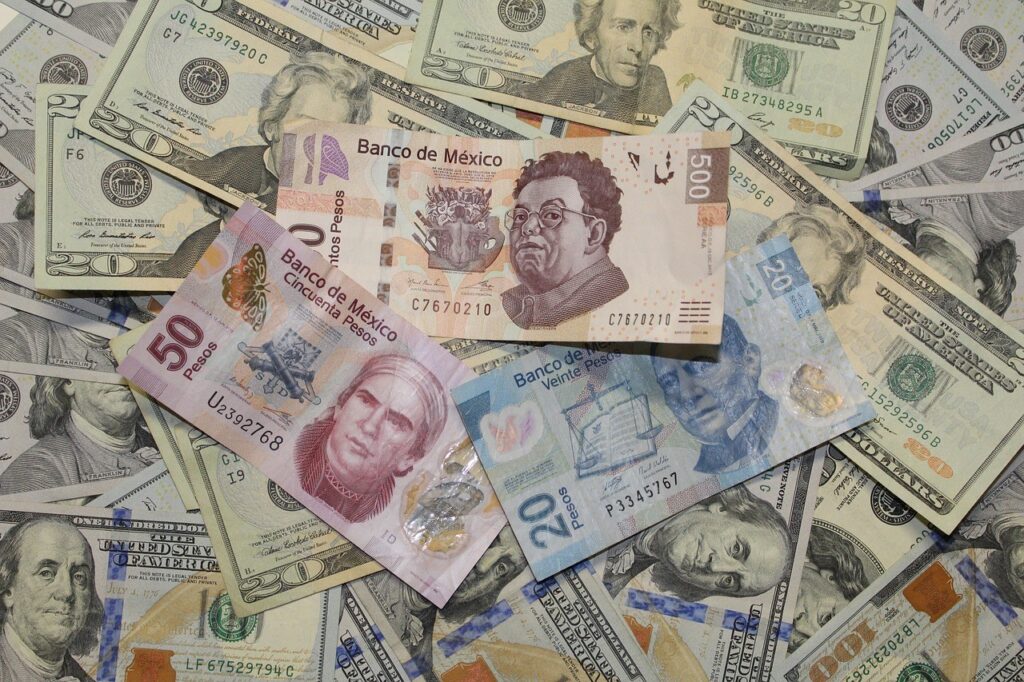The currency that creates winners and losers
Most people are aware that the Swedish and Norwegian krona have lost value against the US dollar. In the foreign exchange market, there are always winners and losers because currencies are priced in pairs, i.e. against each other. One of the big winners is the Mexican peso.
In the international currency market, the peso is among the world’s best performing currencies this year. A combination of high interest rates in Latin America’s second largest economy, financial stability and remittance and foreign investment inflows has seen the Mexican currency appreciate by double-digit percentages against the dollar in 2023.
This month, the Mexican currency reached its strongest levels against the dollar since 2016, earning a new nickname – the ‘super peso’.
On Friday, the Mexican peso was at around 17.1 per dollar, compared to 25 in March 2020 when the coronavirus pandemic began. Analysts say the peso’s strength is partly due to the high level of the Mexican benchmark interest rate, which is now 11.25%. Lending rates have been raised to combat inflation but have also attracted investors seeking higher returns.
The peso has also been boosted by the so-called ‘nearshoring’ trend, where US companies like electric car maker Tesla are moving their production closer to home in Mexico instead of Asia, experts say.
“When investors are looking for where to invest and looking at emerging markets, there is no other country with a story like Mexico with nearshoring,” said Carlos Capistran, an economist at Bank of America Merrill Lynch.
Mexican miracle
In a country that has suffered major currency devaluations in the past, the strength of the peso has mostly been hailed as good news. Left-wing President Andres Manuel Lopez Obrador refers to it as “the Mexican miracle”. The identified benefits include a reduction in the size of Mexico’s external debt, when its value is converted into pesos. On the other hand, the strong currency reduces exporters’ income.
The prices of many dollar-denominated inputs are falling. This means that Mexican producers can buy them at a better price. The downside is that the strength of the peso is bad for food exports. These products are priced in dollars. This is hitting Mexico very hard because producers are getting fewer pesos than they thought. The US accounts for 80% of Mexican exports.
Peson’s estimate also affects “maquiladoras” – factories set up mainly by US companies in northern Mexico that use local workers to make products to sell in the US.
“This big devaluation of the dollar is bad for maquiladoras because they need more dollars to pay salaries and taxes. However, some say that the days of the “super peso” may be numbered.
Financial analysts expect a slight depreciation in the Mexican currency, partly due to narrowing interest rate differentials. While Mexico’s central bank says it expects to keep its policy rate at the current level for “an extended period”, the US Federal Reserve has flagged another half percentage point increase this year. Capistran expects the peso to return to levels around 19 per dollar by the end of 2023.
About the Viking
With Viking’s signals, you have a good chance of finding the winners and selling in time. There are many securities. With Viking’s autopilots, price data, tables and stock prices, you can sort out the most interesting ETFs, shares, options, warrants, funds, etc.
Click here to see what Vikingen offers: Detailed comparison – Stock market program for those who want to become even richer (vikingen.se)













